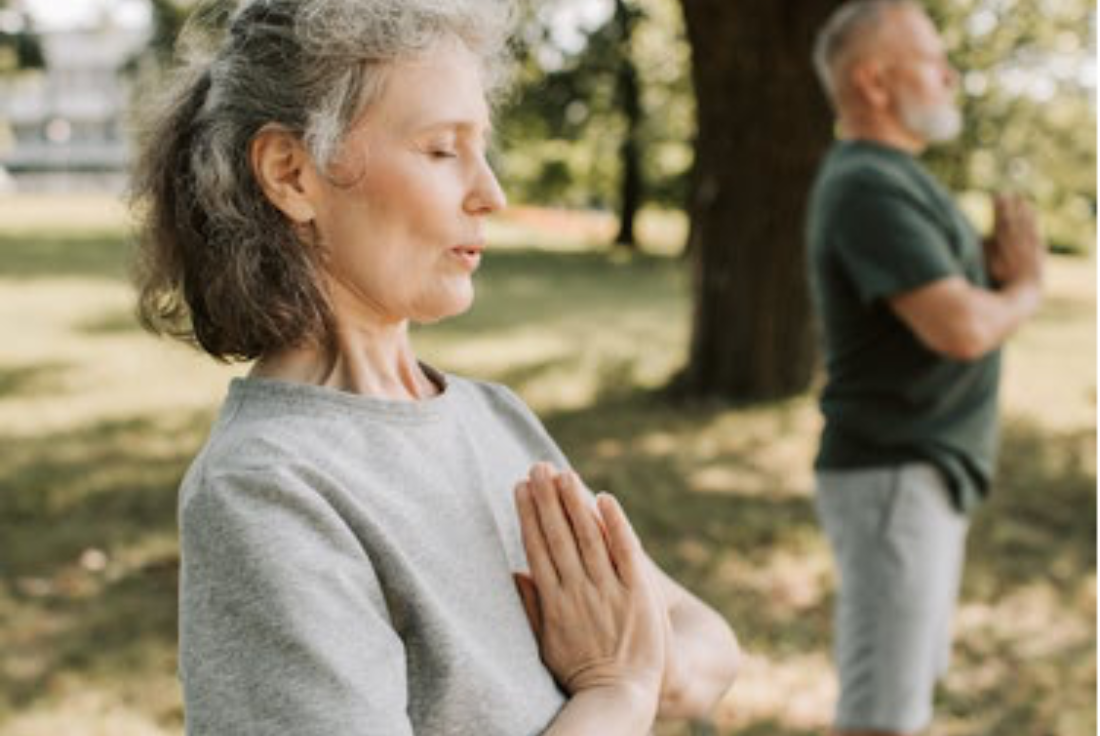How to Manage Personal Well-being During Periods of Stress
Chapel Taylor-Olsen, BA, RN, Community Liaison; and Ashley Yaugher, PhD, Health & Wellness/HEART Faculty
Stress is a normal part of everyday life and can even help us grow and expand. The normal or “healthy” stress of taking on a new project, getting ready for an upcoming vacation, or engaging in a hard workout can even make us feel good, motivated, and excited (Halter, 2018; Wooton et al., 2022).
However, there are times when events around us become so stressful that they cause anxiety, confusion, depression, fatigue, and other negative emotions (Halter, 2018). These are situations where the demand put on us by the stressor overwhelms our coping skills and we have trouble regaining balance (Koolhaas et al., 2011; Schleicher et al., 2022). When we haven’t had a chance to anticipate the stressor, because it is unpredictable, or the stressor is out of our control, we are much more likely to have a negative reaction (Koolhaas et al., 2011). The global COVID-19 pandemic, for example, brought this issue home to many of us and researchers saw an astounding 3-fold increase in Americans with symptoms of depression (Ettman et al., 2020).
Anytime we face a stressor, we reflexively reach for our coping skills. This process is both automatic based on what we know and something that we can improve on with practice or new skills (APA, 2019; Wootton et al., 2022).
There are two main types of coping (Wootton at al., 2022):
- Approach coping -- When we address stressors actively or meet the problem “head-on.” Approach coping has been shown to decrease depression and hopelessness. Some examples of what approach coping looks like include:
- Acknowledging the stressor
- Looking for solutions
- Seeking out social connections
- Learning more about the situation
- Thinking directly about the stressor
- Meditating
- Mindfulness
- Progressive muscle relaxation
- Avoidance coping – When we address stressors passively, or “move away” from the problem. Avoidance coping has been shown to increase acute stress, depression, and hopelessness. Some examples of what avoidance coping looks like include:
- Denying that there is a stressor
- Avoiding or disengaging from the problem
- Distracting ourselves with things like electronic media or food
- Staying busy
- Hoping for the best
- Venting
- Self-blame
During stressful periods, working to increase our approach coping and minimally using avoidance coping can help us respond to the stressor more effectively and improve wellbeing. There are times when allowing ourselves to get distracted and not think about a stressor (avoidance coping) might be necessary and distraction can temporarily improve our mood. However, it should be used sparingly because it can increase post-traumatic stress disorder (PTSD) symptoms and feelings of burnout if other, more approach coping methods, are not also used (Wootton, et al., 2022). People who rely on avoidance coping methods may find that their stress lasts longer, and they are more likely to experience serious mental health problems like anxiety and depression, even if they have never had mental health problems before (Wootton, et al., 2022). Thus, using approach coping skills can benefit us in the short-term and long run for healthier personal well-being and mental health.
Many of the approach coping skills – mindfulness, meditation, breathing exercises, progressive muscle relaxation – while simple, do require practice for us to be able to use them effectively when we are stressed. One active step that we can take is to work on these skills at times when we are not stressed so that we will have better tools for coping when we need them (Schleicher et al., 2022).
Resources to help practice approach coping to manage personal well-being:
Practicing Mindfulnesshttps://extension.usu.edu/relationships/faq/practicing-mindfulness
Calm’s free meditation and mindfulness videos on YouTube
https://www.youtube.com/@calm
UC San Diego Center for Mindfulness (Guided Audio & Video Practices)
https://cih.ucsd.edu/mindfulness/guided-audio-video
Self-Compassion Practices, Exercises, and Tips for Practice
https://self-compassion.org/self-compassion-practices/
Mindfulness for Chronic Pain Management
https://extension.usu.edu/heart/research/mindfulness-chronic-pain-management
988 Suicide & Crisis Lifeline
https://988lifeline.org/
Ettmann, C. K., Abdalla, S. M., Cohen, G. H., Sampson, L., Vivier, P. M., & Galea, S. (2020). Prevalence of depression symptoms in US adults before and during the COVID-19 pandemic. JAMA Network Open, 3(9). https://doi.org/10.1001%2Fjamanetworkopen.2020.19686
Halter, M. J. (2018). Varcarolis’ foundations of psychiatric mental health nursing: A clinical approach (8th ed). Elsevier.
Koolhaas, J. M. Bartolomucci, A., Buwalda, M., de Boer, S. F., Flugge, G., Korte, S. M., Meerlo, P., Murison, R., Olivier, B., Palanza, P., Richter-Levin, G., Sgoifo, A., Steimer, T., Stiedl, O., van Dijk, G., Wohr, M., & Fuchs, E. (2011). Stress revisited: A critical evaluation of the stress concept.
Wootton, A. R., Rice, D. R., McKowen, A. L. W., & Veldhuis, C. (2022). A mixed-methods and prospective approach to understanding coping behaviors, depression, hopelessness, and acute stress in a U.S. convenience sample during the COVID-19 pandemic. Health Education & Behavior, 49(2), 219-230. https://doi.org/10.1177/10901981221084272


 Utah 4-H & Youth
Utah 4-H & Youth